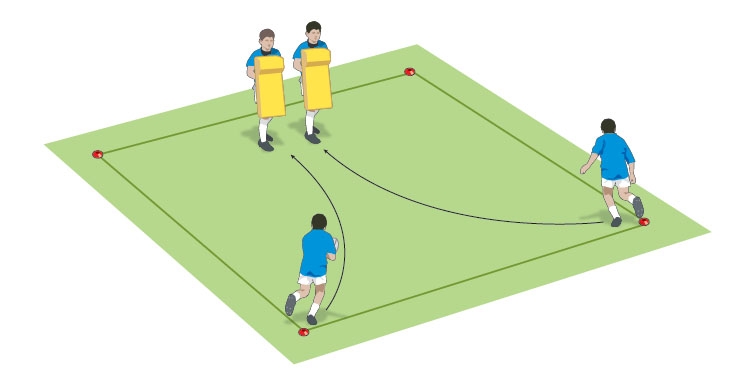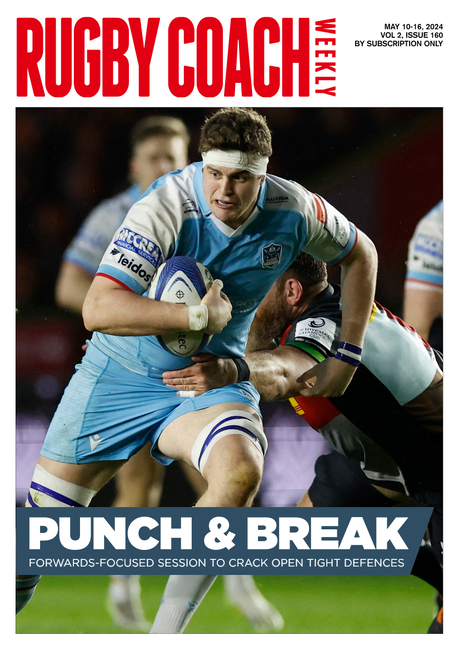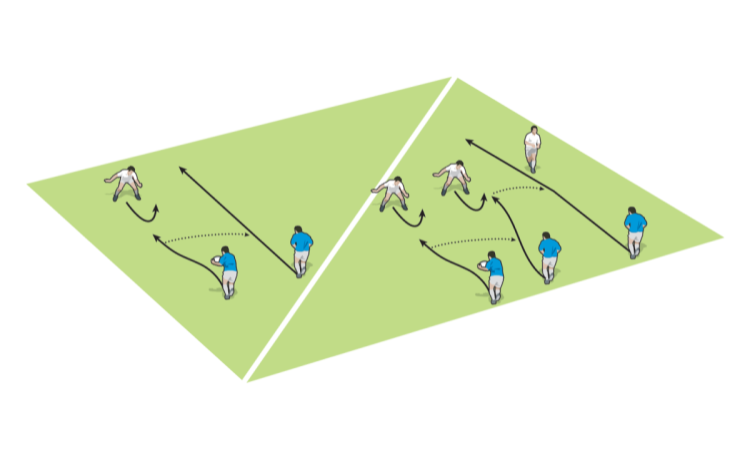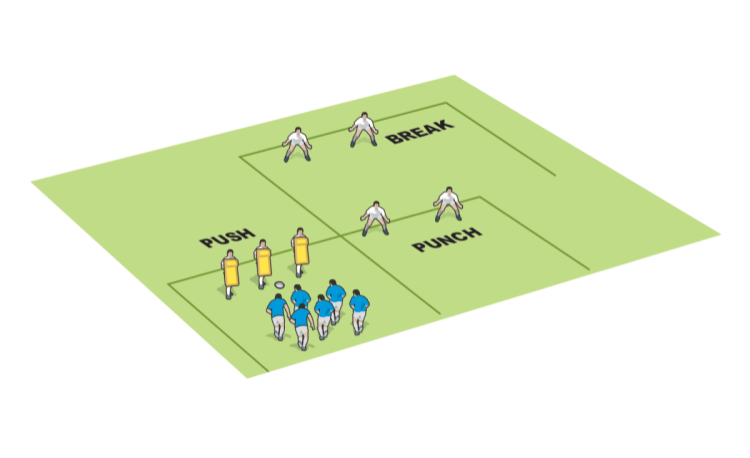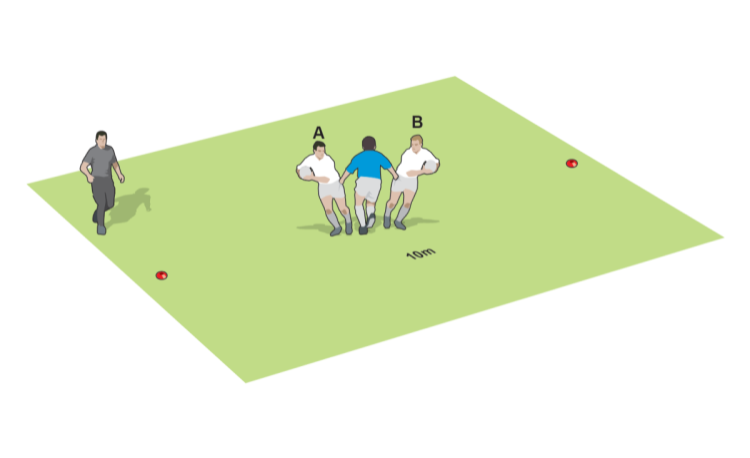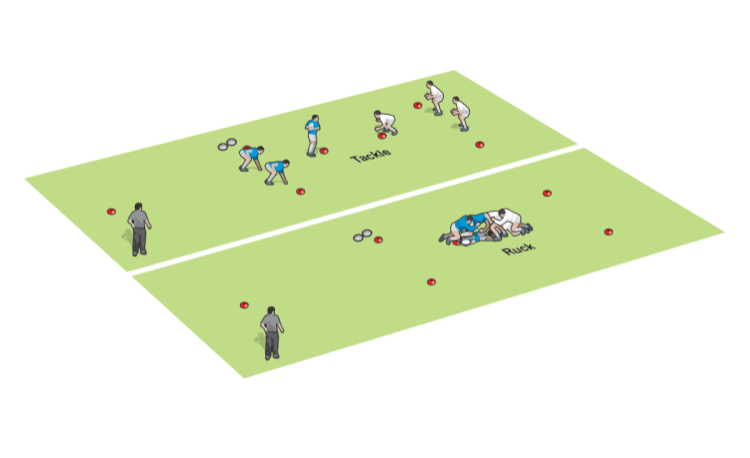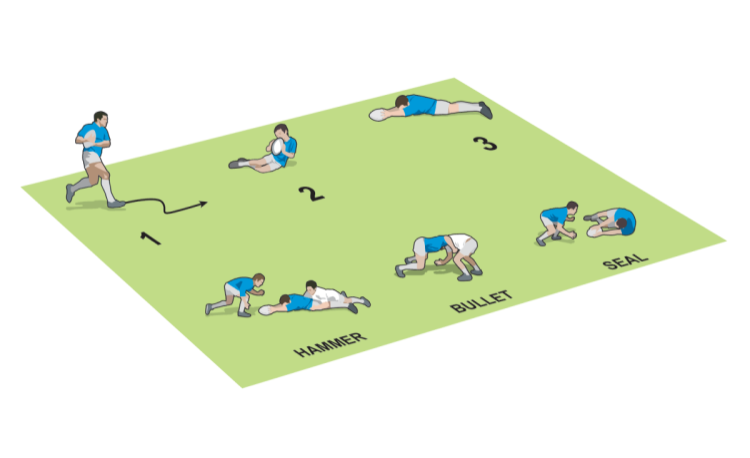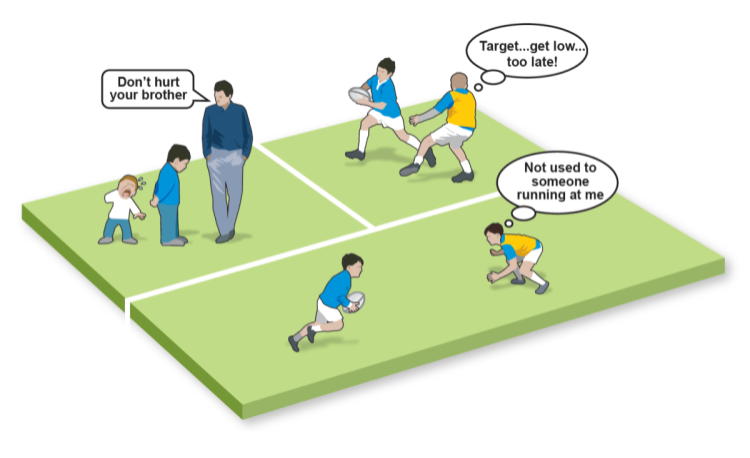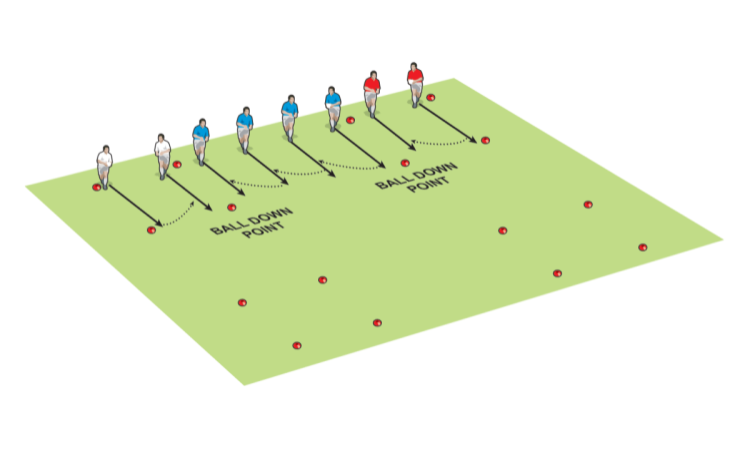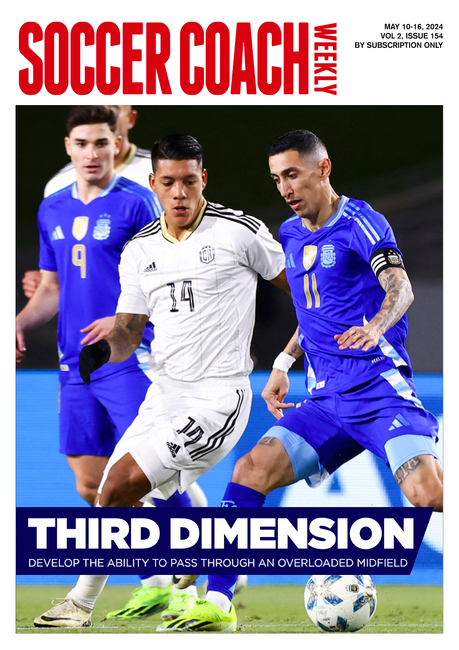You are viewing
1 of your 2 free articles
Keep the ball alive in contact
U11–U12 | CONTACT 6
Get players managing the ball so it’s available to be ripped away by a team mate or passed
- Set up a 5m square area. Put two attackers, one with a ball, on one side of the area (one on each corner) and two ruck pad holders together in the centre on the other side.
- When you say “go”, the ball carrier runs at one of the ruck pad holders and, in the last 2m, passes to the other attacker who runs on to the ball at pace and tries to smash between the two ruck pad holders.
- Players attack and defend in different partnerships, in 30-second sets.
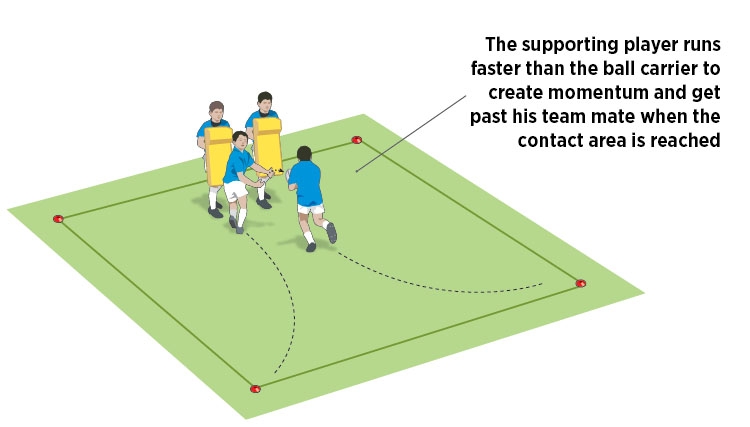
- Develop with the initial ball carrier following the supporter into contact and driving him from behind to add extra power.
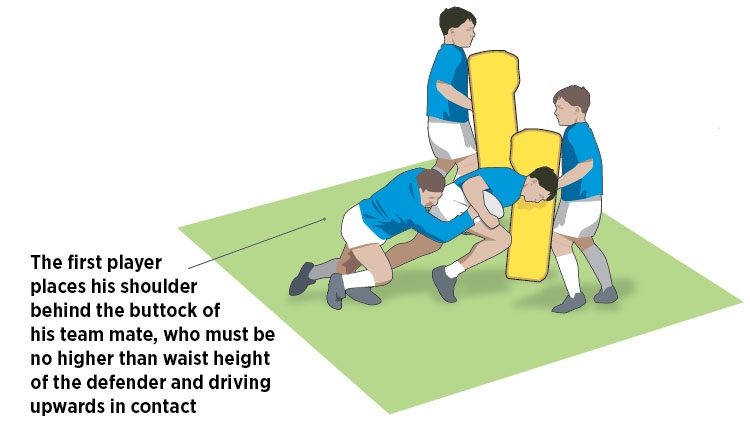
- Or develop with the initial ball carrier going round the pad holders to take a return pass from the support player once he has broken through the pads.
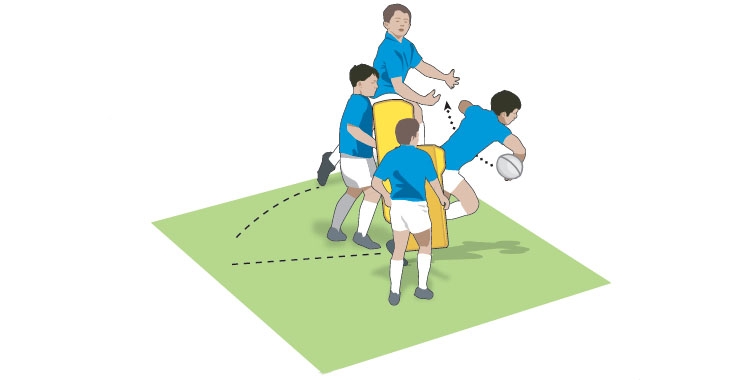
You will need
- A 5m square area
- 1 ball
- Cones
- Ruck pads
Got more players?
Line up attacking players on the two corners so they can run through the activity quickly (remember to change the pad holders, too).
What to tell your players
“Stay on your feet”
“Take small, fast steps through the contact area”
Newsletter Sign Up
Coaches Testimonials

Gerald Kearney, Downtown Las Vegas Soccer Club

Paul Butler, Florida, USA

Rick Shields, Springboro, USA

Tony Green, Pierrefonds Titans, Quebec, Canada
Subscribe Today
Be a more effective, more successful rugby coach
In a recent survey 89% of subscribers said Rugby Coach Weekly makes them more confident, 91% said Rugby Coach Weekly makes them a more effective coach and 93% said Rugby Coach Weekly makes them more inspired.
Get Weekly Inspiration
All the latest techniques and approaches
Rugby Coach Weekly offers proven and easy to use rugby drills, coaching sessions, practice plans, small-sided games, warm-ups, training tips and advice.
We've been at the cutting edge of rugby coaching since we launched in 2005, creating resources for the grassroots youth coach, following best practice from around the world and insights from the professional game.

